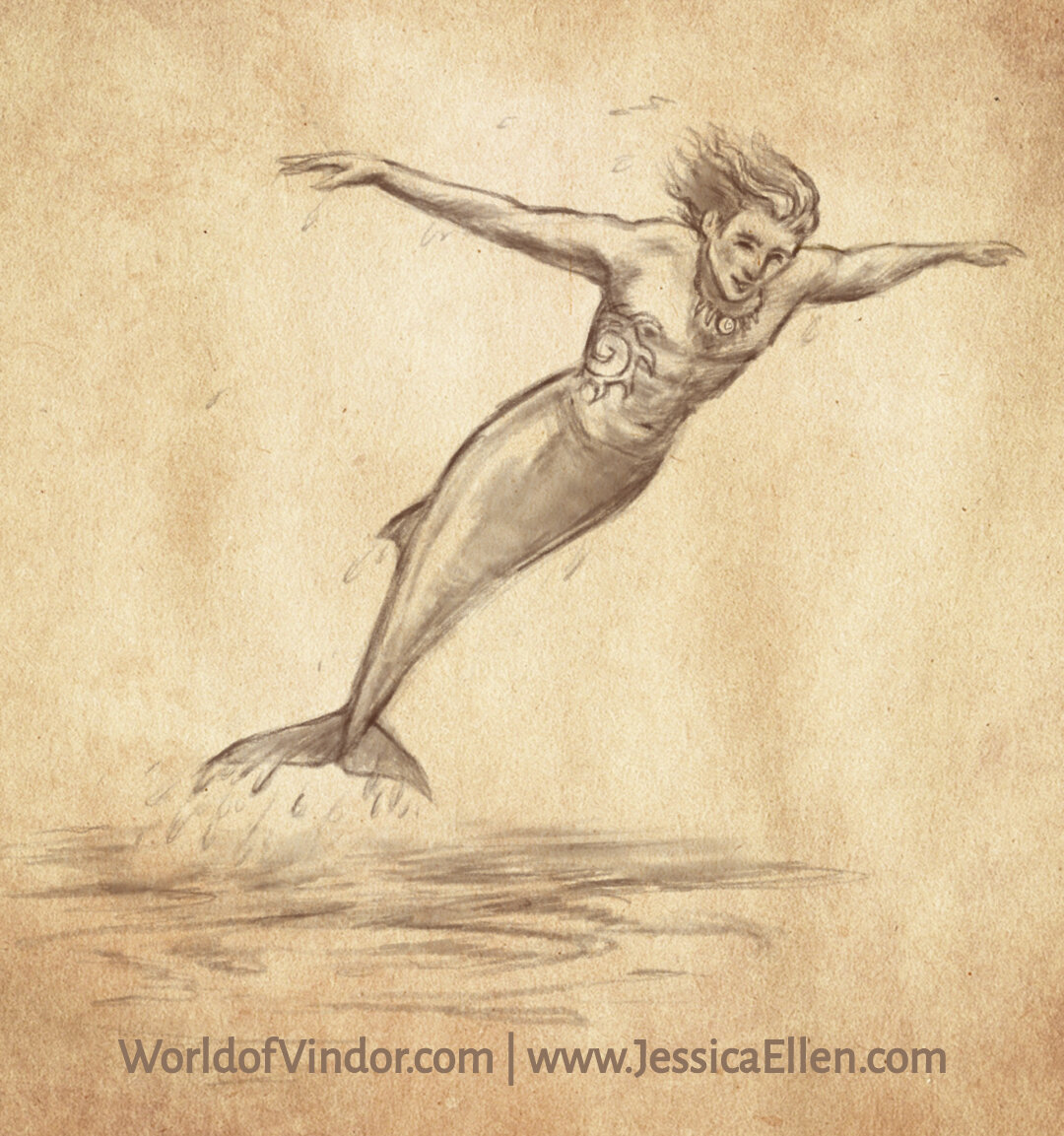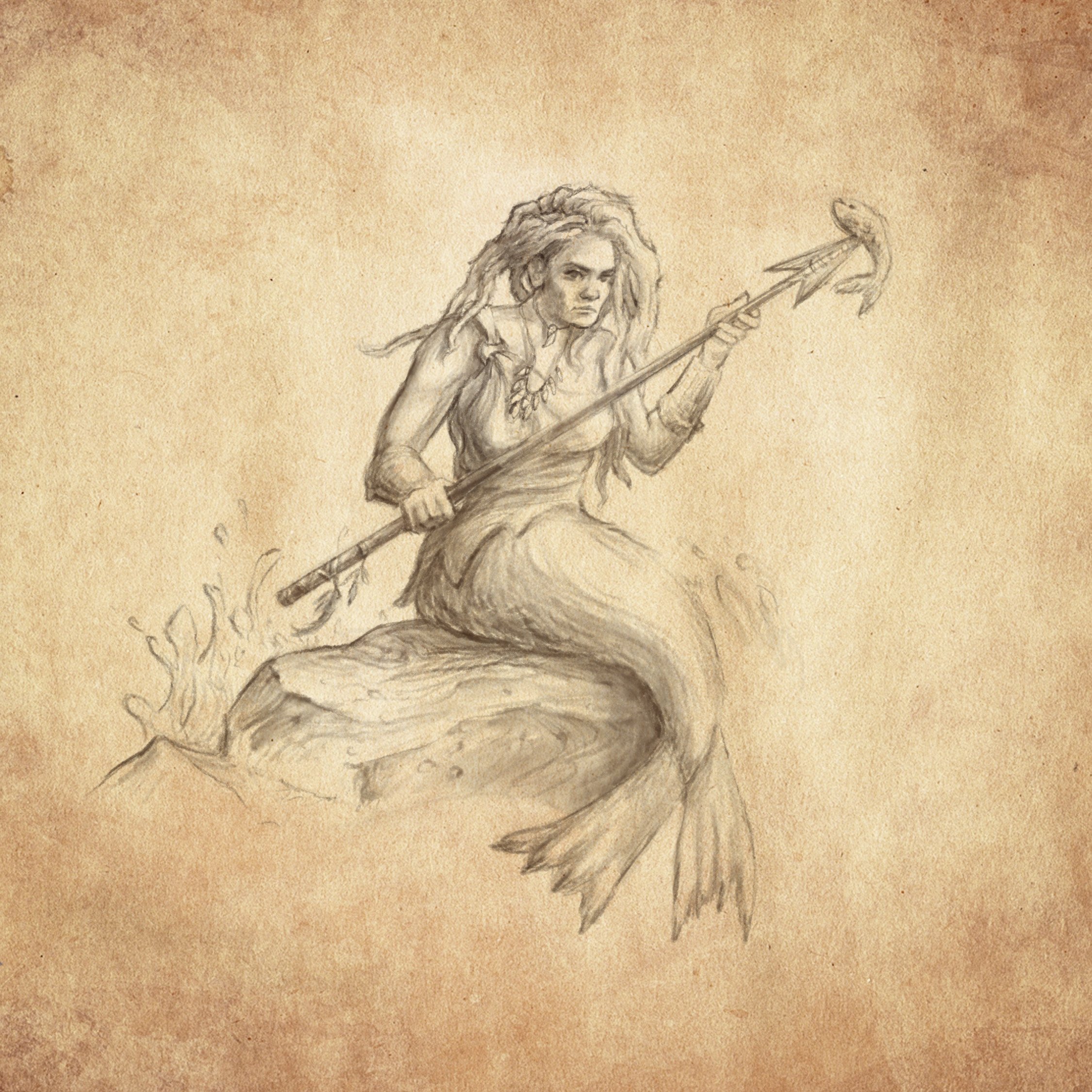A Guide to the Merfolk of Vindor
Dear Paracosmians,
Which fantasy creature first captured your imagination?
Hands down, mermaids were always my favorite, starting from the time I was five or six years old. I spent hours dreaming about living under the sea (and was devastated when I realized that would never happen!), and mermaid doodles filled my notebooks from first grade all the way through college. (Okay, okay, and maybe a few slipped into my notes during boring corporate meetings.)
That probably explains why the world of Vindor has three distinct races of merfolk—any world where my characters would be spending a lot of time would naturally need a healthy variety of sea people.
The mermaids and mermen of Vindor don’t get much “screen time” in Escape to Vindor or Crack the Stone, but they do play a major part in Mists of Paracosmia. Here’s an overview of these watery nations’ cultures, with a few behind-the scenes looks at how these groups came to be.
The Loray: the mysterious people of the deep
The Loray merfolk are the most traditional of Vindor’s sea people: they live under the sea in a beautiful city, have shimmering fish-like tails, and may even have the ability to enchant sailors with their songs—that is, if they ever bother to come up to the surface.
Their ability to breathe underwater is actually unique among the merfolk—the Arions and Selks lack this skill. This means the Loray are able to keep to themselves and cannot be visited or even observed by any outsiders. As a result, their membership in the Council of Vindor (the voluntary confederation of Vindor’s nations) is tenuous at best.
The sea creature that was originally associated most with the Loray is actually the eel. Loray sounds a bit like the eel species Moray, and their home city, Anquilla, is based on the Latin name for the eel family. That being said, don’t picture them has having eel tails. I decided they would look better with the traditional fins, especially after my illustrator, Jess, did this beautiful illustration.
The name Loray is also inspired by the German myth of the Lorelei, a siren or mermaid rumored to live in the river Rhine.
Anquilla, the Loray’s advanced city, is situated within an undersea canyon. Merfolk have carved their homes out of the walls of the canyon, with the poorer classes living closer to the surface, and the rich living in the deeper and narrower sections. At the very bottom of the canyon is the royal palace, where Queen Moriana lives in elegant halls and holds banquets and dances for Anquilla’s elite.
Because it is beyond the reach of sunlight, the city is lit using phosphorescent fish and algae, which emit a gentle blue light that best suits the Loray’s sensitive eyes.
The Arions: the ocean’s poets and storytellers
The Arion merfolk are actually part dolphin, not part fish, and as such they breathe air. They don’t come up on land often, and they can’t live on the ocean floor. They live in nomadic groups at the surface of the ocean, cradled by the waves, warmed by the sun, and enchanted by the stars.
The emphasis of Arion culture goes beyond what they can see and touch (which is pretty monotonous), giving them a rich storytelling and poetic tradition that emphasizes the invisible and spiritual. They also have names and legends behind nearly every visible star. Even the Dembeyans with their telescopes and astronomical charts don’t know the stars as well as the Arions!
Though they don’t appear much in any of the current novels, the Arions are apparently one of Megan’s favorite peoples. In chapter 3, when she believes she may only have a few hours to spend in Vindor, she makes a special trip to see them first.
The name “Arion” is borrowed from a Greek myth about a poet/musician who was cast overboard by pirates. A pod of dolphins, who had gathered to hear his melodies, rescued Arion from drowning.
The Selks: the rough people with soft hearts
The half-seal Selks, who scrape out an existence on Vindor’s rugged coast, are considered uncouth and primitive by many of Vindor’s peoples. Like the Arions, the Selks only breathe air, but they spend much of their time in rocky caves, straddling the worlds of land and sea.
Though known for their warrior-like appearance (they often wear shark skin and teeth as a sign of toughness), the Selks are extremely tender with their children, and may have softer hearts than they let on.
As for the name origin, if you’re familiar with Scottish mythology (or if you’ve ever seen the beautiful film Song of the Sea), you may have heard of a creature called a selkie. A selkie is a kind of faerie who takes the form of a seal in the water, but who can shed her skin and take human form on land. There are several stories in which a selkie’s skin is stolen from her, trapping her on earth until it is found. Though selkies are not merfolk, strictly speaking, I adapted the name because it fit so well.
The Selks are technically the first people of Vindor I ever dreamed up—seal-tailed mermaids appeared in my sketchbooks when I was about 9 years old. I remember pretending that some of my mermaid dolls (of course I had several of these) had furry tails and could only breathe air, earning them the scorn of the prettier, fish-tailed merpeople—a motif that shows up in Mists of Paracosmia!
I hope you’ve enjoyed this deep dive into Vindor’s merfolk cultures. If you’d like to learn more about Vindor’s peoples (there are 12 in all), be sure to check out worldofvindor.com. And if you have any questions, feel free to ask me on my GoodReads author page, on Facebook or even on Instagram, and I’ll try my best to answer!
Meanwhile, keep dreaming up your own worlds, my dear Paracosmians.
Yours,
Emily G.


